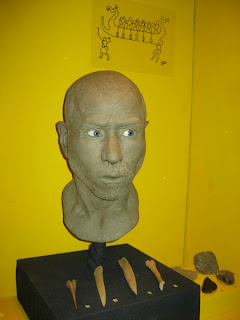In the article "Russian ethnic history inferred from mitochondrial DNA diversity Irina Morozova et al." we find very interesting facts:
Being quite distant from the Finno-Ugric group, the Southern Russians consequently differ from the Northern Russians in their closeness to the Germanic group. This difference indicates that the Germanic people played a significant role in the development of the southern, but not the northern segment of the Russian gene pool. In general, the Germanic influence on the formation of the Russians is not as obvious as the impact of the Slavic, Baltic, and Finno-Ugric people. However, strong interactions between the Germanic and Slavic tribes have been found in archeological materials dating from the mid-first millennium B.C. to the early first millennium A.D. These interactions were the strongest on the northern coast of the Black Sea, in the area of the multiethnic Chernyakhov archeological culture (second to fifth centuries A.D.). In the second half of the first millennium A.D., the descendants of this culture colonized the southern regions of the historical Russian area (Sedov, 1994, 1995). However, there is no evidence in the historical literature of the interaction between the Germanic tribes and the Slavs (and later, the Russians) after the Slavic colonization of the East European Plain. Therefore, the Germanic influence could not have occurred after the early part of the first millennium A.D., which was before the eastward Slavic migration (Sedov, 1994, 1995). Apparently, the impact of the Germanic people on the Chernyakhov Slavs affected the gene pool of modern Southern Russians, consequently differentiating them from the Northern Russians (Fig. 6).

It is worth noting that the Ryazan region, though attributed to the central Russian group has a distinct attraction to the southern group, is clearly seen in Fig.5
Apparently this is another confirmation of the words of the historian Jordanes that the Gothic king took Ermanaric Oka river basin: “thiudos: Inaunxis Vasinabroncas Merens Mordens Imniscaris Rogas Tadzans Athaul Nauego Bubegenas Coldas”.












